Ca2+/calcineurin-inhibited adenylyl cyclase, highly abundant in forebrain regions, is important for learning and memory
- PMID: 9822726
- PMCID: PMC6793314
- DOI: 10.1523/JNEUROSCI.18-23-09650.1998
Ca2+/calcineurin-inhibited adenylyl cyclase, highly abundant in forebrain regions, is important for learning and memory
Abstract
Activation of cAMP synthesis by intracellular Ca2+ is thought to be the main mode of cAMP generation in the brain. Accordingly, the Ca2+-activated adenylyl cyclases I and VIII are expressed prominently in forebrain neurons. The present study shows that the novel adenylyl cyclase type IX is inhibited by Ca2+ and that this effect is blocked selectively by inhibitors of calcineurin such as FK506 and cyclosporin A. Moreover, adenylyl cyclase IX is inhibited by the same range of intracellular free Ca2+ concentrations that stimulate adenylyl cyclase I. Adenylyl cyclase IX is expressed prominently in the forebrain. Substantial arrays of neurons positive for AC9 mRNA were found in the olfactory lobe, in limbic and neocortical areas, in the striatum, and in the cerebellar system. These data show that the initiation of the cAMP signal by adenylyl cyclase may be controlled by Ca2+/calcineurin and thus provide evidence for a novel mode of tuning the cAMP signal by protein phosphorylation/dephosphorylation cascades.
Figures
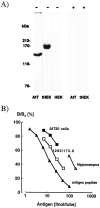

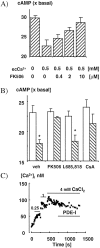
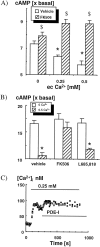
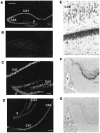
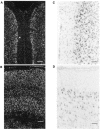



References
-
- Abel T, Martin KC, Bartsch D, Kandel ER. Memory suppressor genes: inhibitory constraints on the storage of long-term memory. Science. 1998;279:338–341. - PubMed
-
- Antoni FA. Calcium checks cyclic AMP–corticosteroid feedback in adenohypophysial corticotrophs. J Neuroendocrinol. 1996;8:659–672. - PubMed
-
- Antoni FA. Calcium regulation of adenylyl cyclase—relevance for endocrine control. Trends Endocrinol Metab. 1997;8:7–13. - PubMed
MeSH terms
Substances
LinkOut - more resources
Full Text Sources
Other Literature Sources
Medical
Miscellaneous
